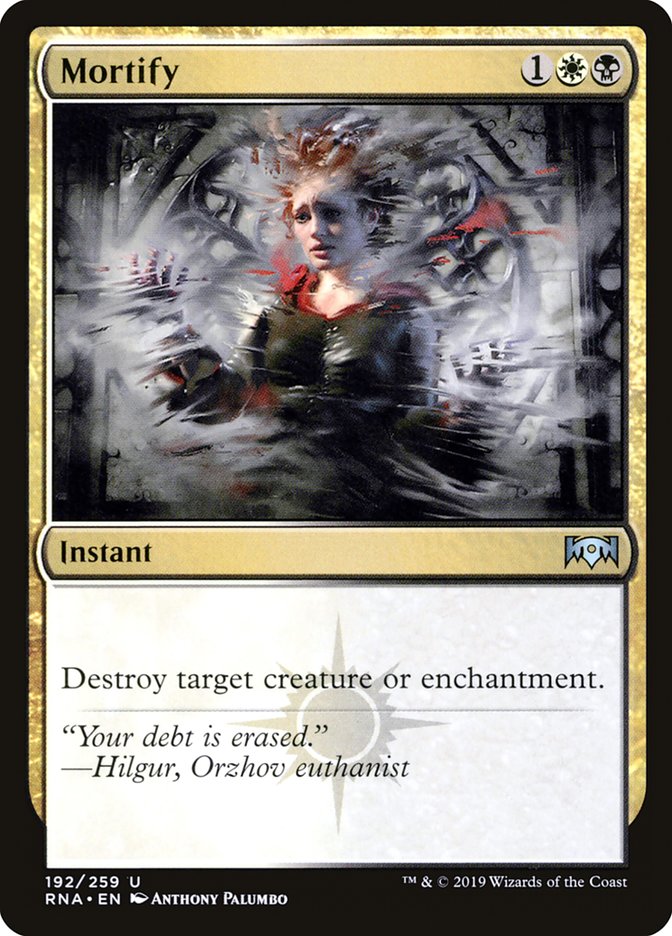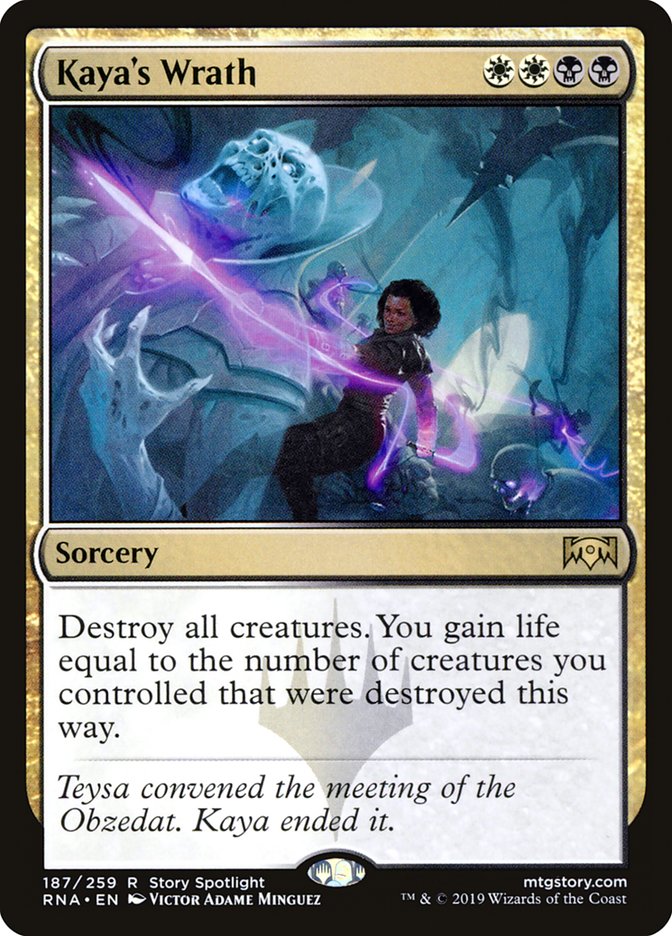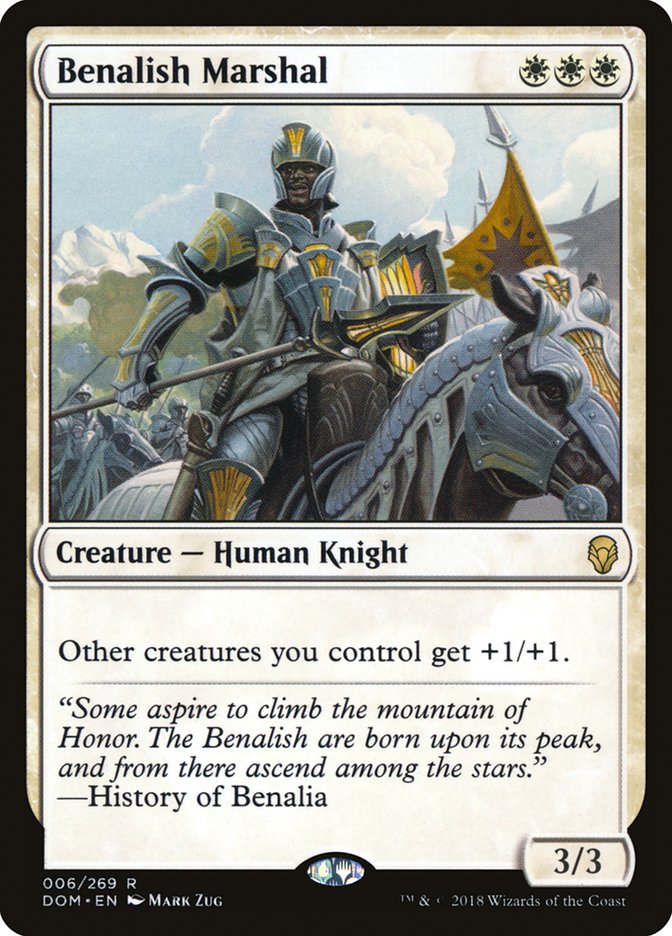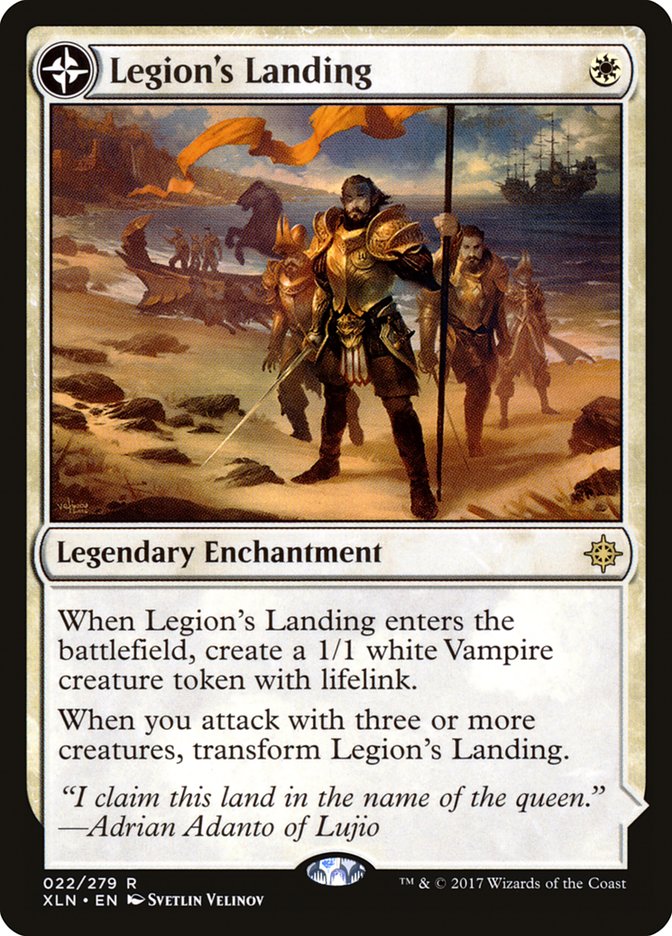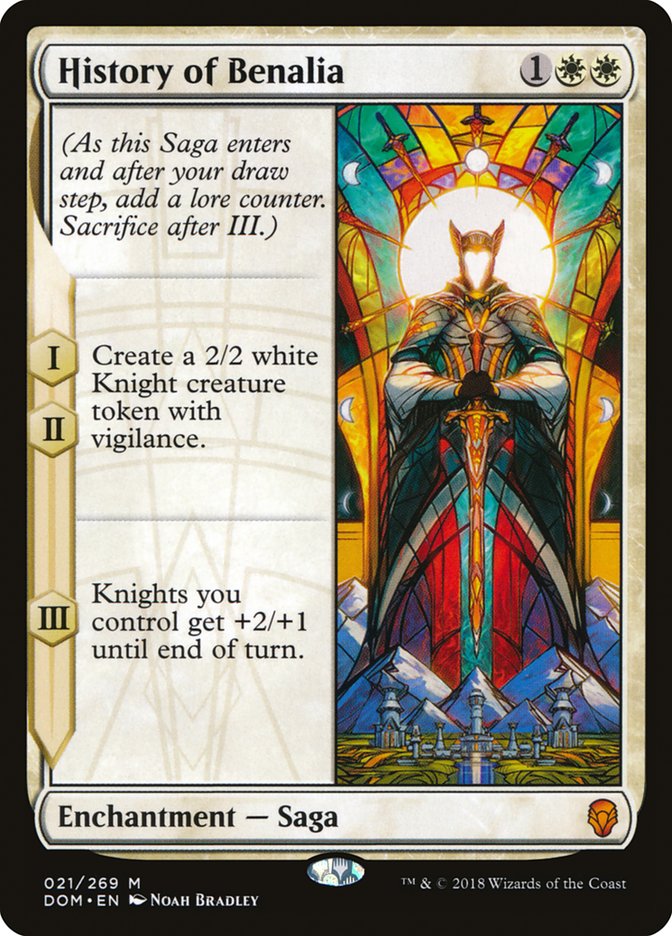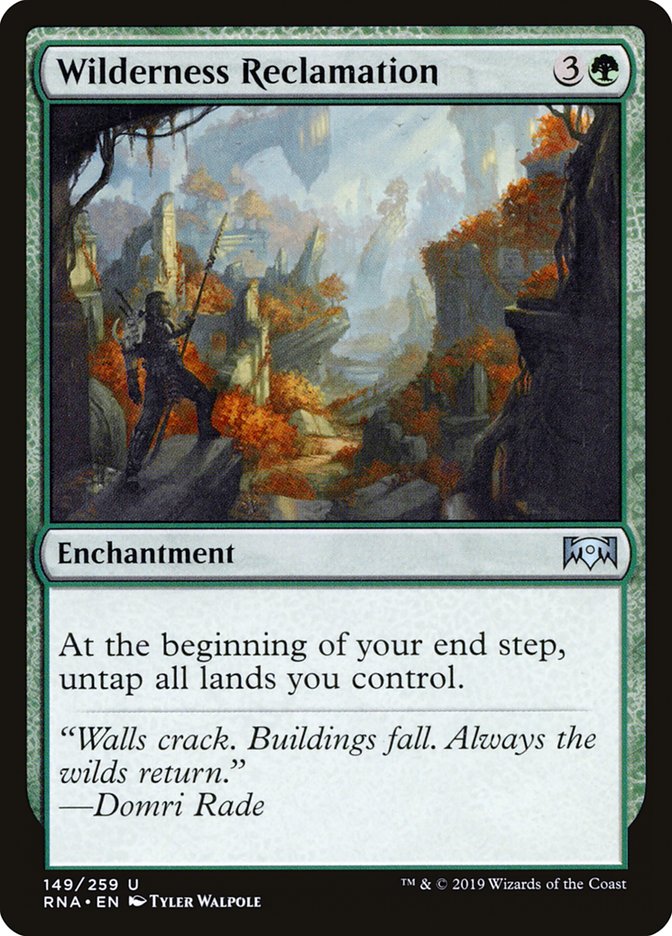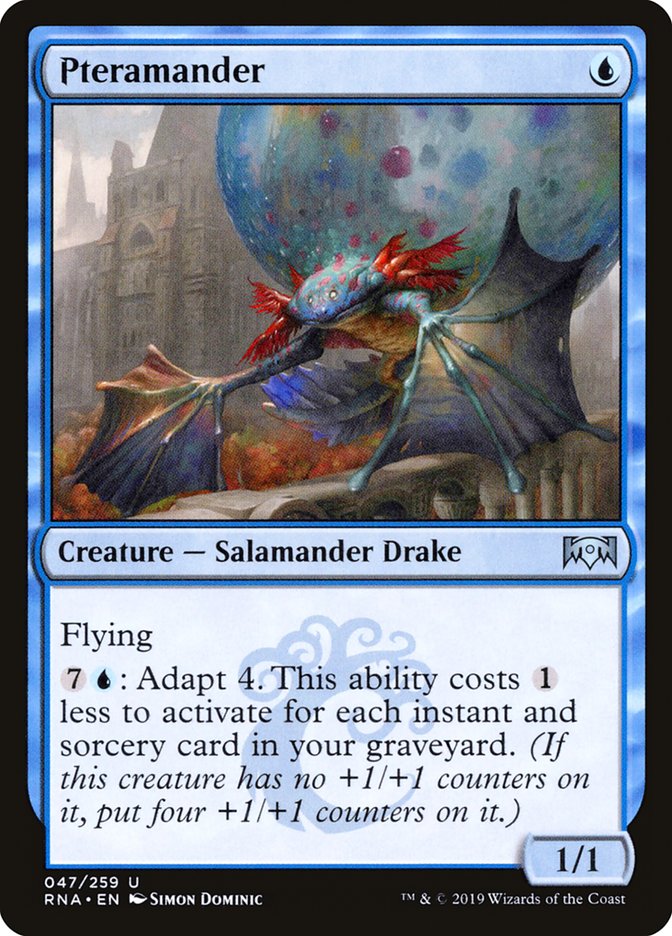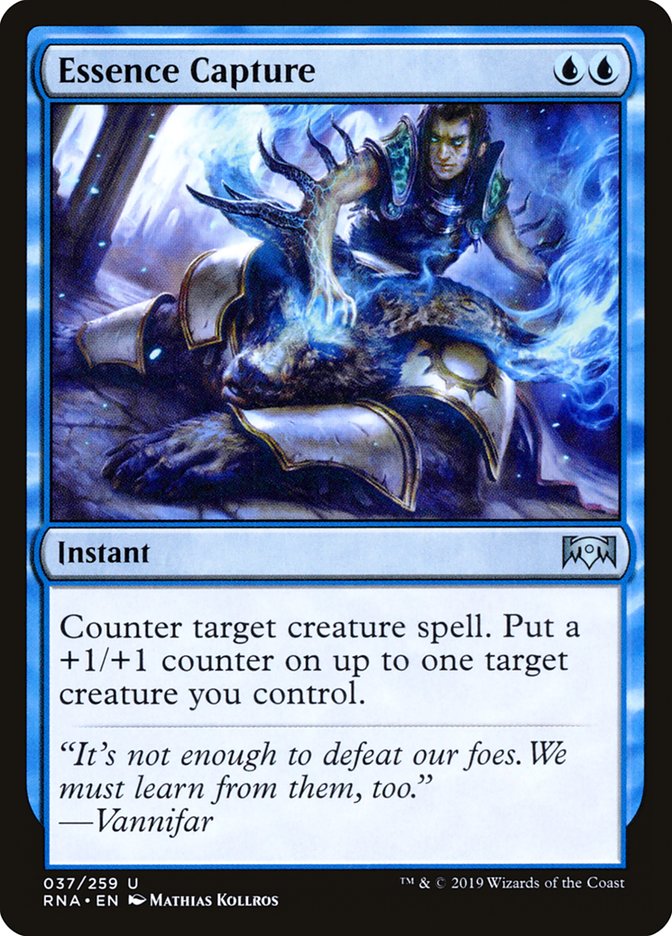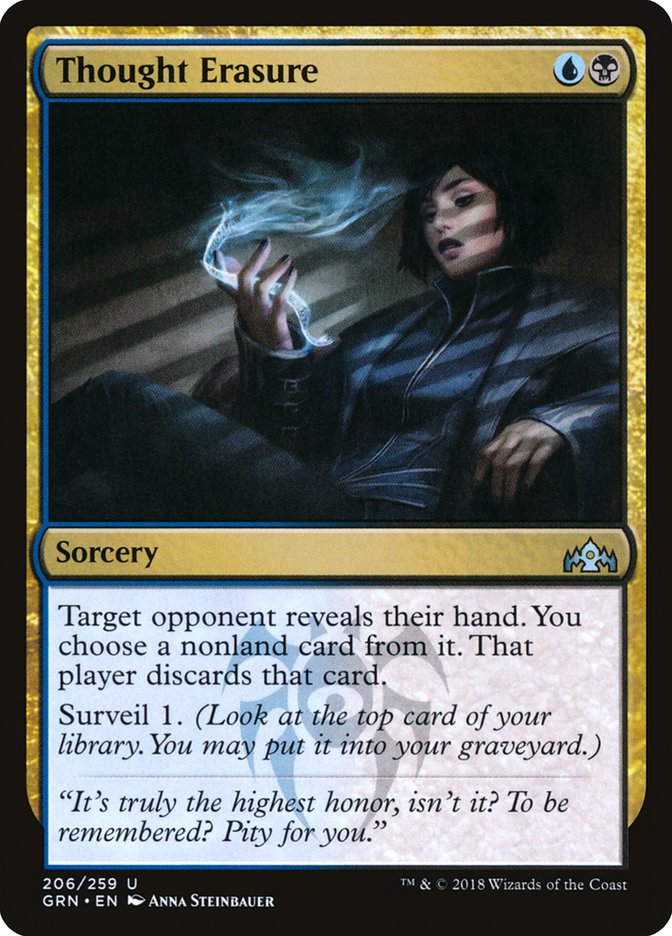Welcome to another edition of Fact or Fiction! Today, Shaheen Soorani, Ari Lax, and Patrick Sullivan are here to render their verdicts on five statements about Ravnica Allegiance Standard leading into SCG Dallas. Don’t forget to vote for the winner at the end!
1. With a dominant performance at SCG Baltimore and various RPTQs, Esper Control is currently the best deck in Ravnica Allegiance Standard.
Shaheen Soorani: Fact. Esper Control was primed for a breakout last season but lacked the necessary mana for consistency. Thought Erasure is the end-all, be-all of hand disruption and it’s finally getting its day in the sun. I wrote a full article when Thought Erasure was previewed and knew that was going to be an automatic four-of in every Esper Control deck if it was Standard legal.
Ravnica Allegiance boosted the signal of Esper with two phenomenal upgrades. Absorb replaced Sinister Sabotage and Kaya’s Wrath cancelled our need for Ritual of Soot. The sweeper was the biggest upgrade, giving us a spell that’s effective against most decks in the format.
Absorb seemed like a minor upgrade because Sinister Sabotage had the powerful surveil mechanic attached. It turns out that three life was as big as I thought it would be, making both Ravnica Allegiance spells key for Esper Control being as good as it is. Somehow it defeats aggro, midrange, and the control mirror, only losing some coinflips to decks that are gunning for the new king of the hill.
Ari Lax: Fiction. Team Constructed events bias towards the best players more than the best decks. If you have three good players with three reasonable decks, that’s often enough to get to a good finish. It’s really hard for three people to make three independently correct deck decisions on the same weekend across three different formats, so metagame edges tend to get muted. Having everyone go around 10-5 is often better than one person going 15-0 and everyone else going 7-8. The SCG Baltimore Top 8 decks aren’t indicative of the actual best decks in Standard, but merely a selection of reasonable ones.
So look at the Standard Classic and Magic Online MCQ. Both of those events were light on Esper in the top slots, with Izzet Drakes and Sultai Midrange being bigger winners. At best, Esper Control is one of the better decks and certainly not the actual best deck.
Plus, I beat the crap out of Seth Manfield and Edgar Magalhaes at #SCGBALT playing stupid stock Sultai Midrange. By process of “scoreboard,” that makes Sultai Midrange the best deck.
Patrick Sullivan: Fiction. Definitely nothing wrong with the strategy if that’s your sort of thing. The metagame is in a fairy narrow place, with one-drop aggro and Hydroid Krasis midrange composing a significant percentage of the field, and control decks typically excel when the answers can be tuned to a specific range of threats.
I just think that there’s room for evolution on the other side of the table, in a way that doesn’t significantly damage other matchups – more Vraska’s Contempts, Assassin’s Trophy, and Plaguecrafter out of the Golgari-styled decks, more Risk Factors and fewer Goblin Chainwhirlers and Experimental Frenzies from Mono-Red Aggro, and so on. The lists from the Open and Classic in Baltimore suggest that these changes are already becoming commonplace.
The Esper deck suffers from the usual stuff. All the games that don’t involve Search for Azcanta feel like tremendous slogs, it’s very hard to win if you miss any early land drops against almost anything, finishing rounds in time is a challenge, the maindeck has a bunch of bad cards against a range of opponents, and so on. I think there’s a noticeable delta in overall card quality between this deck and Sultai Midrange, and Game 1 against Moon-Red feels so bad that it’s hard to feel confident in the overall matchup even with a lot of great options in the sideboard. I think there’s been some room for Esper to emerge in the aftermath of the Sultai decks getting overtuned for the mirror, but I don’t think the deck is among the best options if the public at large is more broadly aware.
2. Azorius Aggro, not Mono-Red Aggro as initially expected, is the best aggressive deck in Ravnica Allegiance Standard.
Shaheen Soorani: Fiction. Azorius Aggro stole the stage like Mono-White Aggro did last season. Standard is so healthy right now that any well-built deck can attack the metagame and win a tournament. There are far too many viable archetypes in aggro world to declare a top dog at this point. Between Rakdos, Azorius, Mono-Red, Boros, and Mono-Blue, the format feels closer to Modern than Standard. Luckily for us control fans, none of them are impossible to defeat.
Azorius Aggro may be better now because of its matchup against control decks. Having access to countermagic gives it a slight edge, but that percentage gain will be temporary. Once control decks adapt and add additional copies of Cry of the Carnarium, Mono-Red Aggro will immediately resume its popularity. There are too many Lightning Bolt effects in Standard due to some oversight, which makes it only a matter of time for Mono-Red Aggro to become the most played aggro deck again.
Ari Lax: Fiction. Tim Wu, lifelong Boros Guildmage, had his team one win out of the Top 8 of #SCGBALT with Azorius Aggro. His wonderful teammate Tommy Ashton went on the Cedric Phillips Podcast this week and ruthlessly berated the deck, as well as Cedric for playing the Magic Online MCQ with it. Cedric agreed it sucked, largely because its expensive spells are mana hungry and spell hungry. You need three lands to cast Benalish Marshal, but also lots of creatures that each cost a card. Mulligans or flood are instantly lethal.
Even in Arena Best-of-One, where all the white aggro mana flow issues are mitigated, I can’t advocate for it. Have you tried to beat Mono-Red Aggro now that they have Light Up the Stage?
If you’re looking for a “best aggro deck,” Azorius Aggro isn’t it. Azorius Aggro plays a specific role in the metagame, punishing people for playing the wrong aggro hate like Basilica Bell-Haunt and for getting their expensive control spells Negated. Azorius Aggro can be the best deck for a weekend but won’t be the all-around best aggro deck in the format.
Patrick Sullivan: Fiction. The red cards are absolutely busted and there’s no chance I’m trying to splash Deputy of Detention when the best decks either play almost no nonland permanents, are all creatures with enters-the-battlefield triggers, or are nothing but Mountains and Lightning Strikes. I respect the white cards quite a bit but it’s hard for me to believe that it’s better to attack Sultai Midrange through winning creature combat (quality blockers, removal, and Find // Finality) rather than Lava Spike’ing them down (basically Wildgrowth Walker or bust), and it doesn’t seem like a better path for the Esper matchup either, given that your best sideboard cards (Negate and Spell Pierce) aren’t trivial to cast.
I think the red lists floating around are mostly bad. Here’s mine:
Treasure Map is like an Experimental Frenzy that actually resolves sometimes and doesn’t die to Mortify. It pairs very nicely with Banefire and Fight with Fire to give you a good shot in games that go deep, the goal of many of your sideboarded opponents. This configuration might be giving up too much equity against white aggro, but that’s easy enough to fix by adding Goblin Chainwhirler back into the maindeck; Runaway Steam-Kin is so much better against Wilderness Reclamation decks and the difference is negligible in all the other matchups, in my experience. In any event, I’d rather iterate here than try the Azorius Aggro approach.
3. With disappointing performances at SCG Indianapolis, SCG Baltimore, and various RPTQs, decks based around Wilderness Reclamation simply aren’t as good as originally advertised.
Shaheen Soorani: Fact. I was dragged in front of a firing squad for tweeting to an excited Ali Aintrazi that Wilderness Reclamation has “no text” and will be a disappointment. After the tar and feathering, I came back out with a minor retraction, saying the card is powerful but will not impact Standard in a way that most players thought. It’s quite possible that the best Wilderness Reclamation deck is still elusive, with professionals clamoring to find the perfect shell.
Wilderness Reclamation has a very powerful effect that begins the turn it’s cast. The downside remains that it takes four slots from your control deck without offering any battlefield advancement or card advantage. This isn’t a disqualifying feature, but it does put the card on notice if it doesn’t immediately lead to victories. At this point, Wilderness Reclamation is a letdown for some, but a predicted finisher for this grumpy control veteran.
Ari Lax: Current Fact, Future Fiction. I think that it’s really easy to build a bad Wilderness Reclamation deck. I played against a lot of them at #SCGBALT, and despite losing most Game 1s, they had no chance in a match against counterspells, discard, and random green creatures. I would hate to see what happens if they had to play against Game 1 Spell Pierce.
That said, I’m reminded of Primeval Titan after Valakut, the Molten Pinnacle rotated from Standard. It took a week or two, and then everyone was finding Kessig Wolf Run and Inkmoth Nexus.
Wilderness Reclamation is on the same power scale as Primeval Titan. Bant Nexus still won the Magic Online MCQ. People will find the right combination of Hydroid Krasis and whatever else to make something work. I both wouldn’t advise playing Wilderness Reclamation this weekend, because the decks aren’t quite there, and would advise it because you might be the person to crack the code.
Patrick Sullivan: Fact, for now. The lists that I’ve seen so far has been too disjointed, too non-functional in the games where Wilderness Reclamation isn’t involved for whatever reason, too slow, too little draw on the cheap, and so on. I think this MTGO PTQ-winning list is the truth, however:
Planeswalkers (2)
Lands (24)
Spells (34)
- 4 Opt
- 3 Search for Azcanta
- 4 Revitalize
- 4 Nexus of Fate
- 4 Root Snare
- 3 Chemister's Insight
- 4 Growth Spiral
- 4 Depose
- 4 Wilderness Reclamation
Sideboard

I think Depose // Deploy is a massive step forward as some defense and card drawing early on, a way to set up Teferi defense when the game is about that, even a way to win once you’ve set up a bunch of turns in a row. The bigger overarching element is the cantrips. Depose, Opt, Revitalize, and Growth Spiral give the deck a redundancy and consistency that builds shaped around Expansion // Explosion have lacked, in my observation. I think using Wilderness Reclamation to enable a million cantrips and Search for Azcanta is a more stable and just as powerful route than trying to do a million expensive things turn after turn, and I believe this general path will be the method of turning Wilderness Reclamation into everything it was hyped into being a few weeks ago.
4. With upgrades in power level thanks to Pteramander and Essence Capture, Mono-Blue Aggro is set to go from a fringe deck to a major player in Ravnica Allegiance Standard.
Shaheen Soorani: Fact. Mono-Blue Aggro had a tough time against the midrange decks last season. In Ravnica Allegiance Standard, most of these decks have cut some of their early removal to make room for Hydroid Krasis, understanding that their life total will bounce back. The lifegain from the new Simic powerhouse, combined with Wildgrowth Walker, has made Sultai Midrange a bit too brave in the removal department.
This removal shaving has occurred in the control world as well. Most Esper Control lists are down to three removal spells in two-mana slot, making the Mono-Blue Aggro matchup tough to win. I see the popularity increasing by the day, which will push me to play additional copies of Cast Down and/or Moment of Craving in the maindeck of Esper Control. Without these modifications, Mono-Blue Aggro can embarrass us with a runaway creature that has a Curious Obsession attached.
Ari Lax: Fact. Alexander Hayne is #1 Mythic on Arena with Mono-Blue Aggro. He’s playing in the Best-of-Three queues.
One of the things that stood out watching him was that he said his sideboard was great, and I agreed. That’s unusual for a monocolored deck, but you get both grindy tools like counterspells and Search for Azcanta and anti-creature tools like Surge Mare and Exclusion Mage.
I’m not certain Essence Capture is the best, but wow is Pteramander good. The deck already wanted a 1/1 flier for one, and unlike Mist-Cloaked Herald, you’re happy to topdeck Pteramander. Mono-Blue Aggro is almost as good as Izzet Drakes at filling up a graveyard of spells and Pteramander often just shows up to crank a mediocre clock to a one- or two-hit kill.
Patrick Sullivan: Fact. I think this deck is unfairly slept on. I’m not big on its position if white aggro keeps trending up; you just aren’t equipped to brawl with a deck that big and fast. But, getting onto the battlefield quickly, drawing some cards, and holding up a few counters is very strong against a variety of strategies, particularly if Wilderness Reclamation starts catching on. Dive Down, Spell Pierce, and Tempest Djinn cobble together a passable matchup against Mono-Red Aggro.
Mono-Blue Aggro certainly isn’t ripe for every metagame – the deck is too soft against people who just put a bunch of good stuff onto the battlefield early and every color gives great options for that. But that sort of dimension isn’t particularly popular right now. The red decks are more about Lava Spikes than good creatures and spell-based control and combo make up a sizable portion of the field. Even for the creature matchups in question, Exclusion Mage, Entrancing Melody, and Sleep each have their moments of winning the sideboarded games. Ignore this deck at your own peril.
5. To quote Ari Lax, “Thought Erasure is the best card in Ravnica Allegiance Standard.”
Shaheen Soorani: Fact. Not going to take anything away from Ari here, but Thought Erasure is one of the best cards in Standard. There’s infinite hype about Hydroid Krasis being the current champ, but there’s a two-mana hand disruption spell that begs to differ. It’s close for me between Thought Erasure and Teferi, Hero of Dominaria, but I lean heavily toward the cheaper spell.
Thought Erasure not only disrupts our opponent’s gameplan, it also plays a pivotal role in helping us hit land drops. It has singlehandedly allowed control players to ditch cheap card draw in favor of late-game options because hitting lands is easy with a little surveil. The surveil combined with Search for Azcanta has spoiled deckbuilders and allows us to permanently get away from Opt and Anticipate.
Control would be fine without Thought Erasure, but Esper Control would not be. It’s a requirement to play four copies in the maindeck and I was shocked when my control colleagues stubbornly had them in the sideboard to start the format. There’s some taboo between playing countermagic and hand disruption together in the maindeck, but it turns out to be a very powerful combination.
Ari Lax: Fact.
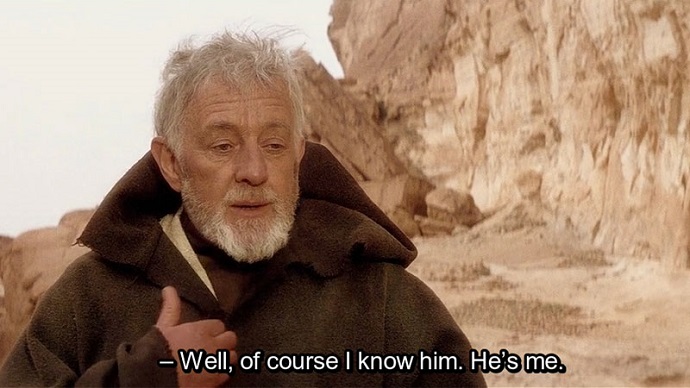
I’m just going to provide a list of choice quotes from my entire article describing why this is true.
“Thought Erasure is the best card in every deck that plays it.”
“Thought Erasure is just the best answer to Hydroid Krasis.”
“With Thought Erasure in your deck you can afford to be a bit short on answers for resolved copies of those [hard to answer] cards [like Carnage Tyrant and Experimental Frenzy] because they just won’t resolve.”
“Seriously, hands with Thought Erasure and without are night and day for Esper Control. If you cast it on Turn 2, it feels like nothing can go wrong.”
“Sticking a fragile creature? Sounds like a job for Thought Erasure. Extra points if that fragile creature is something that immediately starts churning out absolute value like these two Esper options.”
“If all their cards were Thought Erasure they might have actually won.”
Patrick Sullivan: Fiction. Search for Azcanta and Teferi, Hero of Dominaria appear in almost all the decks that Thought Erasure, excluding Wyatt Darby’s Esper Rares deck from Week 1. Those cards aren’t even close to okay. Red Aggro has Thoughtcast (with a lower deckbuilding cost) in Light Up the Stage. The Sultai decks grind so much value that they can trivialize the occasional Coercion. Wilderness Reclamation makes like eight mana a turn.
I get the point. Many of the Esper decks care about one specific card a lot of the time and can ignore a lot of what else is going on, surveil is important for a deck so thirsty to hit its early land drops, and the information is important for navigating lands that enter the battlefield tapped along with Syncopate. But on raw rate plus deckbuilding opportunity cost it doesn’t sniff the Top 10, much less clock in at #1.


